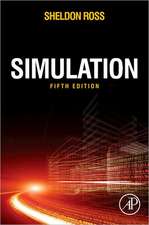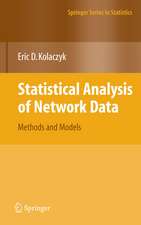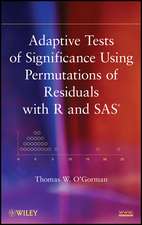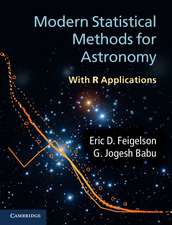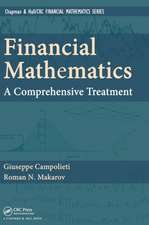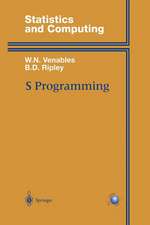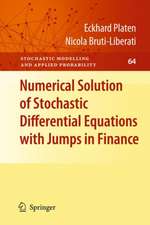Scientific Data Analysis: An Introduction to Overdetermined Systems
Autor Richard L. Jr. Branhamen Limba Engleză Paperback – 27 sep 2011
Preț: 385.62 lei
Nou
Puncte Express: 578
Preț estimativ în valută:
73.82€ • 75.96$ • 62.23£
73.82€ • 75.96$ • 62.23£
Carte tipărită la comandă
Livrare economică 01-15 martie
Preluare comenzi: 021 569.72.76
Specificații
ISBN-13: 9781461279815
ISBN-10: 146127981X
Pagini: 252
Ilustrații: X, 237 p.
Dimensiuni: 155 x 235 x 13 mm
Greutate: 0.36 kg
Ediția:Softcover reprint of the original 1st ed. 1990
Editura: Springer
Colecția Springer
Locul publicării:New York, NY, United States
ISBN-10: 146127981X
Pagini: 252
Ilustrații: X, 237 p.
Dimensiuni: 155 x 235 x 13 mm
Greutate: 0.36 kg
Ediția:Softcover reprint of the original 1st ed. 1990
Editura: Springer
Colecția Springer
Locul publicării:New York, NY, United States
Public țintă
ResearchCuprins
1 Properties of Floating-Point Numbers.- 1.1. Introduction.- 1.2. Representation of Floating-Point Numbers.- 1.3. Characteristics of Floating-Point Numbers.- 1.4. Violation of the Laws of Arithmetic.- 1.5. Accurate Floating-Point Summation.- 2 Matrices, Norms, and Condition Numbers.- 2.1. Matrices.- 2.2. Vector and Matrix Norms.- 2.3. The Condition Number.- 3 Sparse Matrices.- 3.1. Introduction.- 3.2. Sparse Techniques for Null Elements Following a Pattern.- 3.3. Sparse Techniques with Null Elements in Random Locations.- 3.3.1. The Bit Map.- 3.3.2. Paired Vectors.- 3.3.3. The Linked List.- 3.3.4. Hashing.- 3.4. Conclusions.- 4 Introduction to Overdetermined Systems.- 4.1. Introduction.- 4.2. Mathematical Theory of Overdetermined Systems.- 4.3. Modeling Errors and Outliers.- 4.4. Solution of Linear Systems.- 5 Linear Least Squares.- 5.1. The Normal Equations.- 5.2. Solution of the Normal Equations.- 5.3. The Variance-Covariance and Correlation Matrices.- 5.4. Orthogonal Transformations.- 5.5. Iteratively Reweighted Least Squares.- 5.6. Constrained Least Squares.- 6 The L1 Method.- 6.1. Introduction.- 6.2. General Considerations of the Li Solution.- 6.3. Linear Programming.- 6.4. The L1 Algorithm and Error Estimates.- 7 Nonlinear Methods.- 7.1. Introduction.- 7.2. Gradient Methods.- 7.3. Nongradient Methods.- 8 The Singular Value Decomposition.- 8.1. Introduction.- 8.2. Calculating the SVD.- 8.3. Total Least Squares.- 8.4. Singular Value Analysis.

